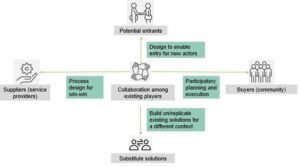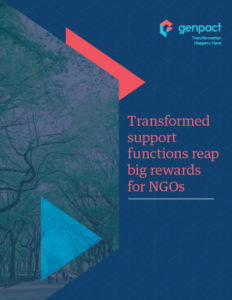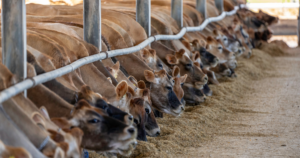
Business diversification through impactful strategy
At Sattva, we helped a Ghanian enterprise identify a suitable go-to-market strategy to support local entrepreneurs, boost sales and reach their targets.

At Sattva, we helped a Ghanian enterprise identify a suitable go-to-market strategy to support local entrepreneurs, boost sales and reach their targets.

In the development sector, funding and innovation are not zero-sum games. The core aspect of any scalable and sustainable solution for social problems is one of ‘taking people along’.
Delivering sustained results since 2009 across emerging economies in collaboration with 0 + COMPANIES 0 + PHILANTHROPIES 0 + NON-PROFITS 0 + COUNTRIES OUR WORK At the heart of our work lies the philosophy of collaboration. Long-standing societal and environmental issues cannot be solved by any one stakeholder alone. Impact

Most organizations neglect support functions while focusing on their core programs and processes. And this can have a significantly negative impact on the funding NGOs obtain from donors.

Scroll down for the executive summary and to access the full report, click “Download the report” on the right or at the end of the summary, based on your web browser.

What are the challenges that make working at Sattva fun? Take a look at this first-hand account from Devika, who leads our People team.

Saloni Gupta brings 14 years of holistic work experience in the social impact space working across social enterprises and micro-finance institutions. As the Delivery Lead at Sattva, her role involves influencing and enhancing the impact path for corporates through CSR. She leads the delivery for West and the overall business


The priorities of corporate giving are changing, one example of which is reduced funding towards education and increased priority to environment, as per recent MCA data.

India is currently undergoing a significant transformation. Over the past decade, we have moved from being the tenth-largest economy to the fifth-largest, and there is potential for us to become the third-largest economy by 2028. The government’s goal is to achieve a US$30 trillion economy by 2047, embodying the attributes
Get in touch with us
For career and job opportunities, write to: careers@sattva.co.in
Internship Opportunities: Apply here
Are you looking for data from the impact sector? Explore India Data Insights.
If you are a non-profit / social org interested in partnering with us : Join the India Partner Network (IPN)
Other Queries: impact@sattva.co.in
© 2025 SATTVA CONSULTING, ALL RIGHTS RESERVED | PRIVACY POLICY